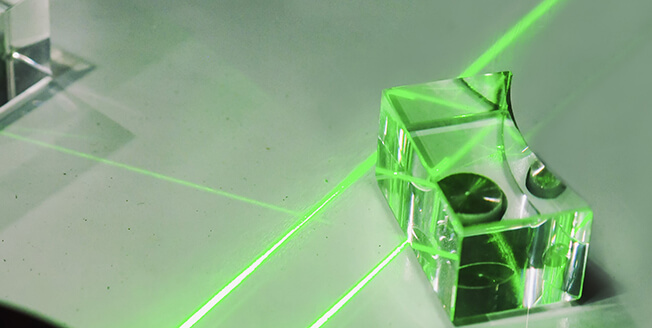
The accurate determination of absolute transmittance and reflectance values in the IR spectral range is a matter of increasing interest, e.g. for the development and specification of optical filters, mirrors or window glass, but also in several research fields. For both accurate reflectance and transmittance measurements, Bruker Optics provides dedicated accessories.
In standard transmission accessories the sample is usually placed in the focus of the IR-beam as indicated in fig. 1(a) and (b). Especially in the case of thick and highly refractive samples, refraction causes a shift of the IR-focus towards the detector, which is associated with an error in the trans-mittance values (see fig. 1(b)). For oblique incidence, refrac-tion gives rise to an additional error caused by a lateral beam shift (fig. 1(c)). These inaccuracies can be overcome by measuring the sample in a parallel IR-beam with perpen-dicular incidence as suggested in fig. 1(d).





